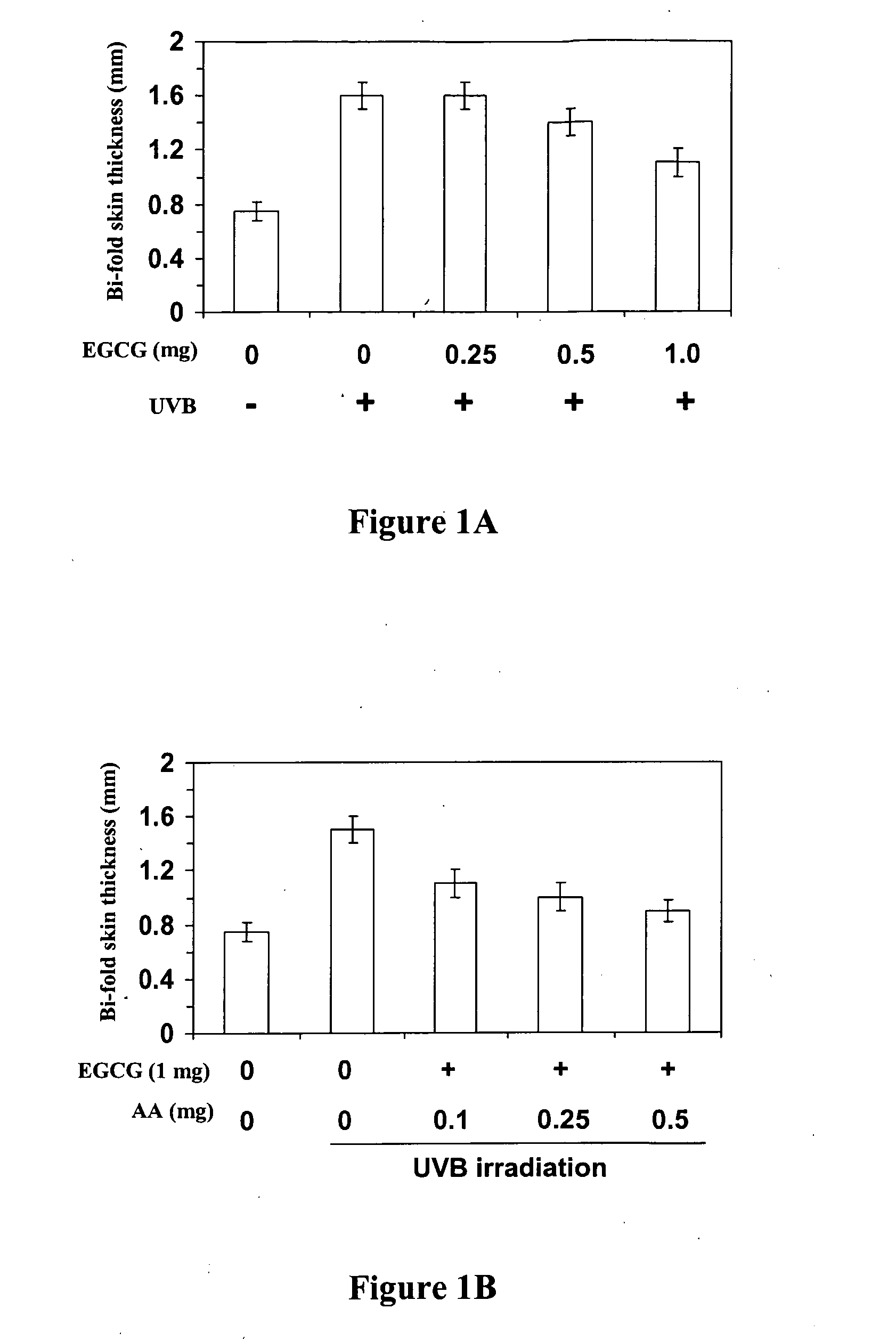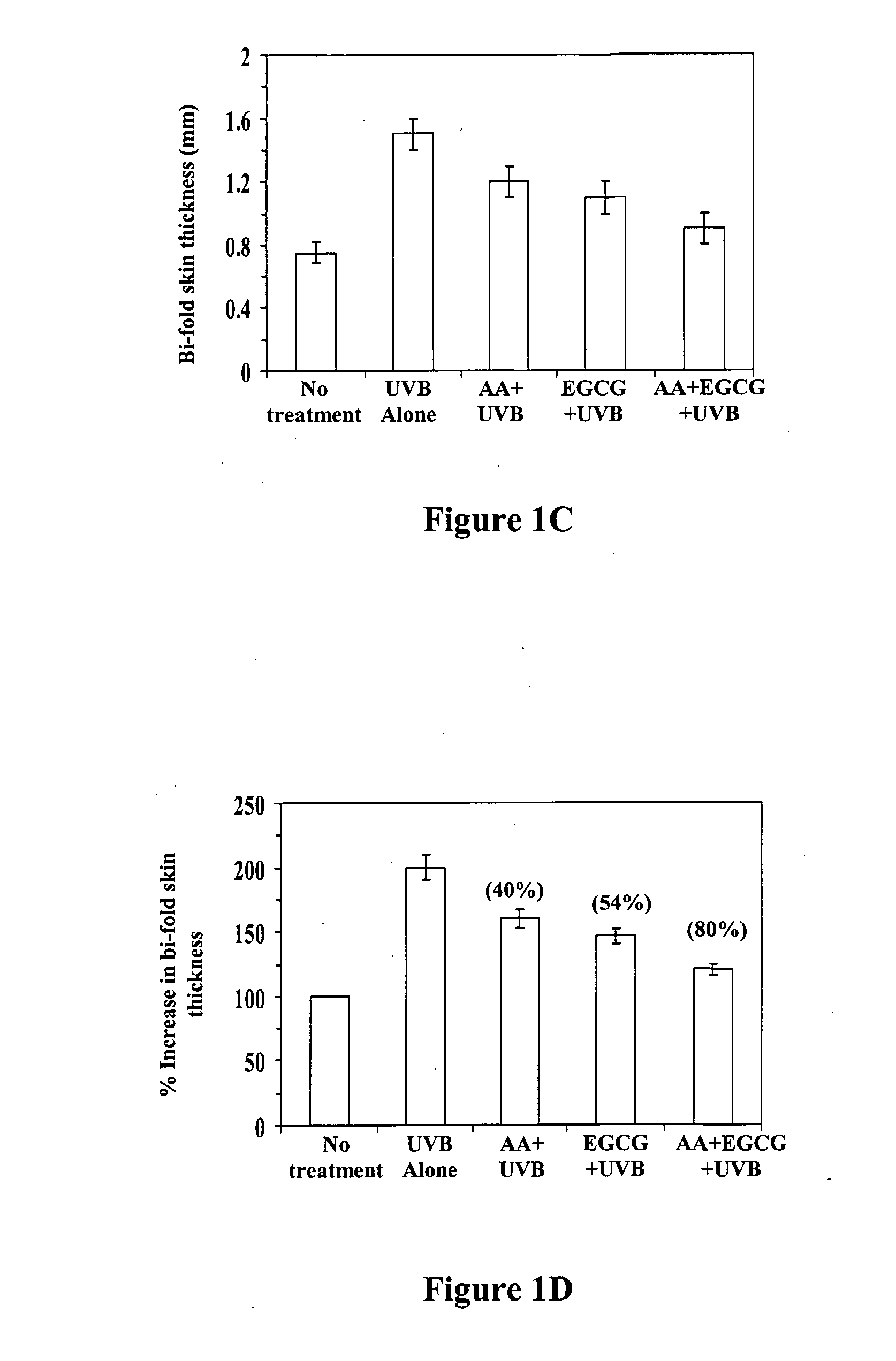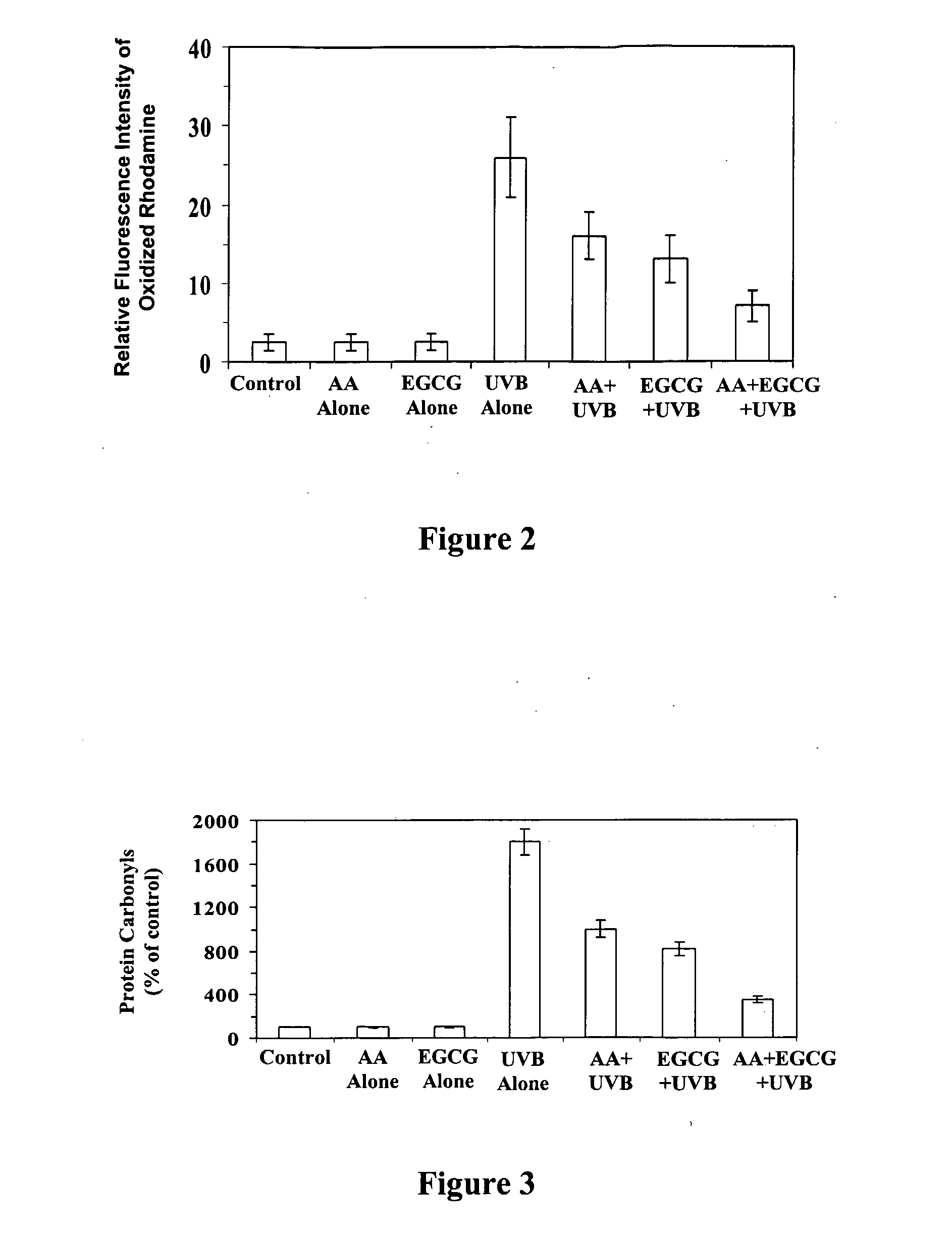Compositions and methods for reduction of cutaneous photoageing
a technology applied in the field of compositions and methods for can solve the problems of only temporary protection, little or even no reproducible effect, and relatively unstable polyphenols and extracts, etc., and achieve the effect of reducing photoageing in the skin
- Summary
- Abstract
- Description
- Claims
- Application Information
AI Technical Summary
Benefits of technology
Problems solved by technology
Method used
Image
Examples
Embodiment Construction
[0018]Solar ultraviolet (UV) radiation has been reported as the primary cause for the vast majority of cutaneous age-related diseases in human. Among other etiologic agents, various studies suggested that reactive oxygen species (ROS) may be involved in damage of critical cellular macromolecules (e.g., DNA, proteins, lipids), especially where the oxidative potential of the ROS exceeds cellular anti-oxidant potential.
[0019]Based on these and other observations, the inventors contemplate that oxidative stress may be associated with photoaging of the skin. Particularly, the inventors contemplate that oxidative stress may activate selected cellular signal transduction pathways, leading leading directly or indirectly to phosphorylation and induction of dermal matrix metalloproteinases (MMP). Among other causes, activation of MMPs degrade extracellular matrix proteins and may lead to wrinkling, photoaging, and / or other skin disorders. The inventors discovered that exposure of UV radiation...
PUM
| Property | Measurement | Unit |
|---|---|---|
| temperature | aaaaa | aaaaa |
| pH | aaaaa | aaaaa |
| hydrophilic | aaaaa | aaaaa |
Abstract
Description
Claims
Application Information
 Login to View More
Login to View More - R&D
- Intellectual Property
- Life Sciences
- Materials
- Tech Scout
- Unparalleled Data Quality
- Higher Quality Content
- 60% Fewer Hallucinations
Browse by: Latest US Patents, China's latest patents, Technical Efficacy Thesaurus, Application Domain, Technology Topic, Popular Technical Reports.
© 2025 PatSnap. All rights reserved.Legal|Privacy policy|Modern Slavery Act Transparency Statement|Sitemap|About US| Contact US: help@patsnap.com



